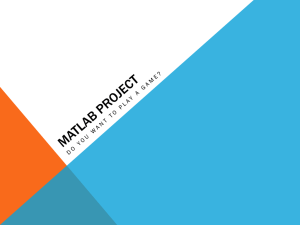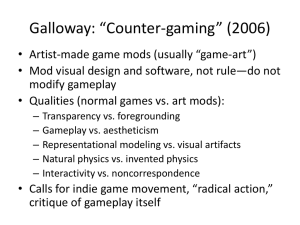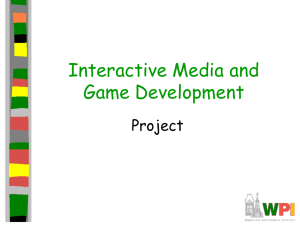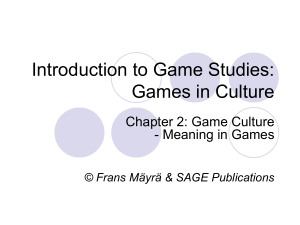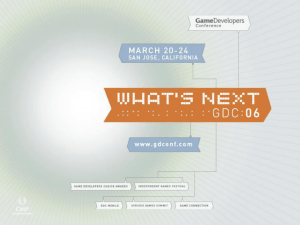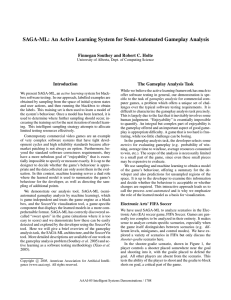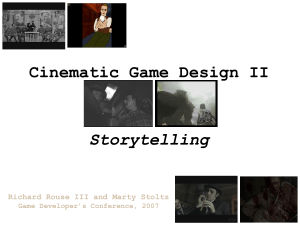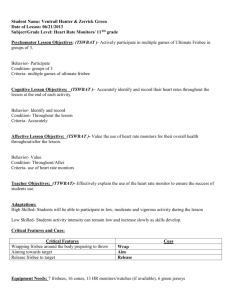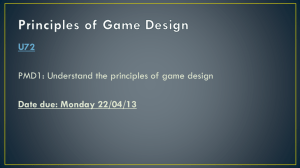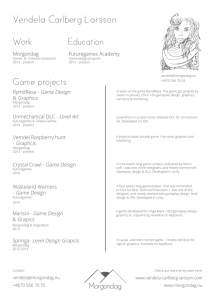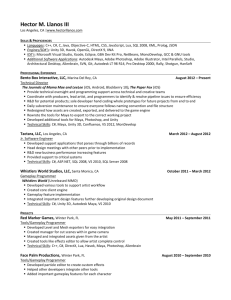26_PresentationPPT
advertisement
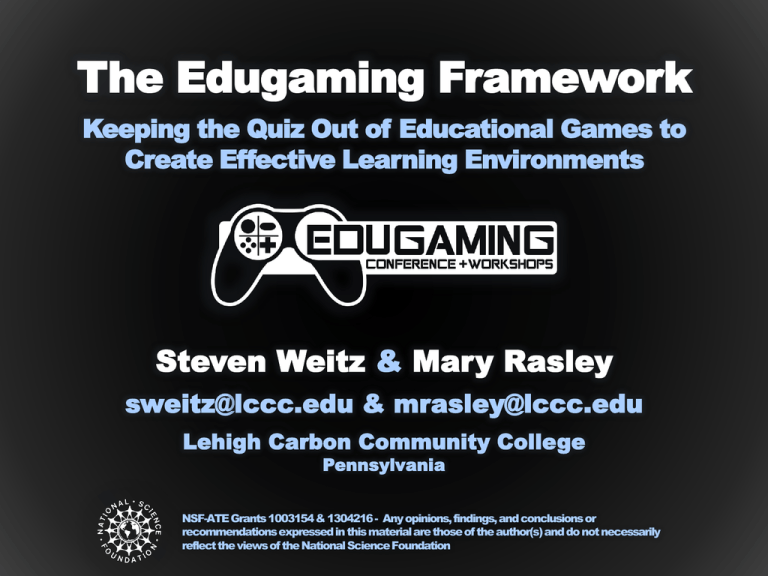
The Edugaming Framework Keeping the Quiz Out of Educational Games to Create Effective Learning Environments Steven Weitz & Mary Rasley sweitz@lccc.edu & mrasley@lccc.edu Lehigh Carbon Community College Pennsylvania NSF-ATE Grants 1003154 & 1304216 - Any opinions, findings, and conclusions or recommendations expressed in this material are those of the author(s) and do not necessarily reflect the views of the National Science Foundation Educational … because most games educational have a reputation games for being are terrible. terrible… wrong with most educational games? But they don’t have to be! They are quizzes pretending to be games Quizzing has a place in the classroom. Quizzing does not have a place in games. Games are NOT great for fact retention What the player does is what will be reinforced. All games “teach” something. We’re trying to make games that teach something useful. Bloom’s Taxonomy The educational content needs to be the play. We found the problem… but why are any games good? It’s all about Choices Not all choices… … are created equal “A game is a series of interesting choices.” – Sid Meier “A game is a series Interesting choices.” – S The choice must have an impact on the game. The player must have a reason to choose one option over another. Too many educational games have no interesting choices. They are a series of right or wrong questions, mixed in with sequences of pure luck. Quiz + Luck =/= Engaging Game. So how do we make educational games that aren’t quizzes? The Edugaming Framework 1) Identify the specific concept to reinforce 2) Analysis: Break the concept into its component parts An example: 2 + (- 4) = X • 2 is a piece • + is a piece (- 4) is a piece • • X is a piece These can be elements in your game 3) Consider the essence of the knowledge those components represent. Back to our example… 2 + (- 4) = X • • 2 is a starting point + is how to alter that starting point • (- 4) is how much to alter it by • X is the end result This is about manipulating numbers 4) The essence becomes the core gameplay using the relationship of the components. Back to our example… 2 + (- 4) = X • Components: Numbers, Combinations, Results • Essence: Manipulation • Core Gameplay: Acquiring numbers to be manipulated to reach a goal. 5) Determine what the User Experience (UX) will be. 5) Determine what the User Experience (UX) will be. 6) Build the rest of the game around the core gameplay, within the desired experience. 7) Refine the game through iterative playtesting. As you playtest your game, analyze the choices the players are making. Steven Weitz & Mary Rasley sweitz@lccc.edu & mrasley@lccc.edu Lehigh Carbon Community College Pennsylvania NSF-ATE Grants 1003154 & 1304216 - Any opinions, findings, and conclusions or recommendations expressed in this material are those of the author(s) and do not necessarily reflect the views of the National Science Foundation The Exercise: • Take the BAD Educational Game provided. • Play it (or don’t – you may be able to easily see the problems without playing it). • Analyze the game based on the framework. • • • • • • • What is the concept being reinforced? What are the components? What is the essence of the knowledge? What user experiences are appropriate? What should be the core gameplay? What rules/actions will allow the core gameplay to work? Implement these rules – playtest, refine, iterate. Remove the questions! Change or Remove the Board! Add in Interesting Choices!

